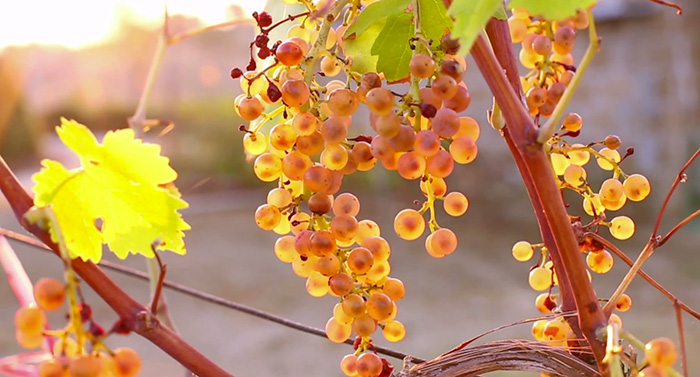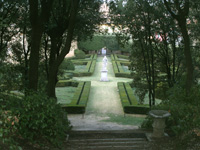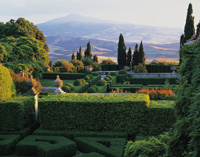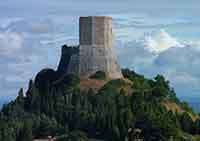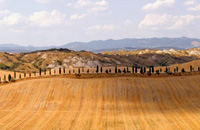| |
|
|
|
Montecucco D.O.C.
|
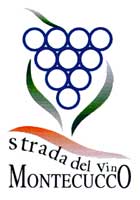
|
|
The Montecucco DOC sits in the southern part of Tuscany. The Montecucco region is nestled between Montalcino, home of the renowned Brunello di Montalcino DOCG, and Scansano, birthplace of the Morellino di Scansano DOCG.
The official Montecucco Sangiovese wine production area comprises six villages: Cinigiano, Civitella Paganico, Campagnatico, Castel del Piano, Roccalbegna and Arcidosso e Seggiano. Despite having a viticultural heritage dating as far back as the eighth century, this winemaking zone was only awarded its DOC classification in 1998.
Wines in Southern Tuscany | The Montecucco DOC wineregion
Events in Tuscany | Cinigiano, Festa dell'Uva
|
|
|
| |
|
Organic Wines | Our neighbours
|
| |
|
Azienda Agricola San Gabriele Arcangelo
The San Gabriele Archangelo property has been applying biological agronomic practices and, as a result, is certificated by ICEA (Italian institution responsible for the certification of biological production). From pruning till the final collection of the products, SGA uses strictly manual methods for both the vineyards and the olive tree plantation. As far as the wine is concerned, the main goal of SGA is to produce an exclusively organic wine.
All the vineyards of the property lie within a zone of controlled and guaranteed origin, and are registered to the DOCG. MONTECUCCO record of the municipality of Cinigiano, part of the Grosseto province in Tuscany, Italy.
The plantation of the vineyards begun on 1999 and the variety of the plants is SANGIOVESE GROSSO at a 100% quantity. The layout of the implantation is 2.8m between the rows and 0.85m between each plant. The average attitude is 300m above sea level and the cultivation pattern of each vine is traditional “a cordone speronato”.
Despite the fact the vineyards are registered to the DOCG. MONTECUCCO SANGIOVESE record, the wine production itself is not labeled as DOCG. MONTECUCCO but instead as IGT (geographical typical denotation). The reason behind this distinguishment is that the SGA wine differs from the typical DOCG. MONTECUCCO wines in two ways; on the one hand, the SGA wine ages an additional year, while on the other hand, it consists solely of SANGIOVESE without the addition of other varieties.
AZIENDA AGRICOLA SAN GABRIELE ARCANGELO
Pod. Santa Gabriella, 1 · 58044 Cinigiano (GR)
Website | www.cuccuvaia.com
|
| |
|
Basile
|
| |
|
Domenico and Giovan Battista Basile purchased this land in 1999, involving their families in the endeavor as well. The property had been left in a state of abandon for 30 years.
After the acquisition, Giovan Battista decided to permanently move with his family from Naples - his hometown - to Cinigiano, to dedicate himself completely to farming.
Basile has, from its very beginning, chosen to cultivate the lands with norms indicated by the biological agriculture. The vineyards cover a surface of four and a half hectares. Grapes include Sangiovese and Merlot tendrils; in 2006 a new 1,500 hectare vineyard with Sangiovese, Merlot and Ciliegiolo.
To help fight diseases that might affect the vines, traditional products, such as sulphur and, in rigorously controlled quantities, copper, are used. Many operations (stripping of leaves, thinning out, green- pruning) are carried out manually on the vines and grapes to permit the plants and fruit to stay healthy and undamaged for as long as possible.
After an initial hard work aimed at recovering land and radically restoring the vineyards, which had been cultivated for centuries on the same soil, the first positive results became evident in 2003.
The grapes are controlled and certified by the Consortium for the Control of Biological Products (Controllo dei Prodotti Biologici -CCPB). The farm also adheres to the CCPB Global Program, a rigorous control that especially limits the use of products even in the cellar.
Giovan Battista has always diligently attended to all of the agricultural and oenological activities with the help of Roberto Cipresso, a world renowned winemaker, wine oscar winner in 2007.
AZIENDA AGRICOLA BASILE
Podere Monte Mario, 58044 Cinigiano
Ref. Giovan Battista Basil
Tel./Fax 0564 993227 Cell. 335 5882149
www.basilessa.it
info@basilessa.it
|
| |
|
Campinuovi | Podere Colle Castagno
|
| |
|
Campi Nuovi is located in the Montecucco DOC zone in the area between Monte Amiata and the Maremma. The 7 hectares of Campi Nuovi vineyards are located next to Podere Santa Pia, at heights between 350 and 465 metres, and enjoy a well-ventilated climate with exposure towards the south and south-east. The estate’s vines lies on the (schistous) galestro, iron-rich red soils & silt slopes of extinct volcano Monte Amiata, at 460 msl, that in turn provides excellent drainage & constant ventilation.
The lands were once part of the estate of the nearby Porrona Castle, managed by the Abbey of Sant’Antimo in the Middle Ages. Land ownership was disputed over the centuries between the two most famous aristocratic families of Siena, the Piccolomini and Tolomei. During the 1950 land reform most of these lands were expropriated by the State and allocated to small farmers. Among them was an area called “Campi Nuovi” (New Fields) in the documents, precisely the Campinuovi estate is located today.
The winery was founded in 2000 after a long search, as the owners were looking for a soil that had the right altitude, exposure, winnowing and geological composition. The land located on a south facing hill had in fact the ideal microclimate and soil characteristics. Owners Daniele Rosellini and Nadia Riguccini acquired the land in 2000 and started planting vines there. The vineyards are planted at densities between 5,000 and 6,000 vines per hectare and consist of some 85% sangiovese, with the remainder being other red grapes (colorino, pugnitello, merlot, cabernet sauvignon) and white grapes (ansonica). Viticulture is certified organic and follows biodynamic guidelines. [0]
The winegrowers take particular care in the management of the vineyards, the grapes are accurately chosen and the wine-making is conducted in a natural manner in big oak barrels with wild yeasts. After the fermentation the ageing is done in 70 and 20 Hl oak barrels.
Wines
DOC Montecucco Rosso, DOC Montecucco Sangiovese, DOC Montecucco Sangiovese Riserva and IGT Maremma Toscana Ansonica Sorie.
Cinignano (Grosseto)
AZ. AGR. CAMPINUOVI PRODUZIONE BIOLOGICA CERTIFICATA
Località Campinuovi, Strada Provinciale Cinigianese 7, Castiglioncello Bandini , 58044 Cinigiano.
www.campinuovi.com
info@campinuovi.com
The estate was sold and is now Podere Colle Castagno.
Podere Colle Castagno
Località Colle Castagno
58044 Cinigiano
www.collecastagno.it
Wines
FIORA 2013 – BIANCO DI TOSCANA IGT | Pinot Grigio 60%, Sauvignon Blanc 20%, Viognier 20%
COLLE CASTAGNO 2011 – SANGIOVESE TOSCANA IGT | Sangiovese 100%
COLLE CASTAGNO 2009 – SANGIOVESE TOSCANA IGT | Sangiovese 100%
|
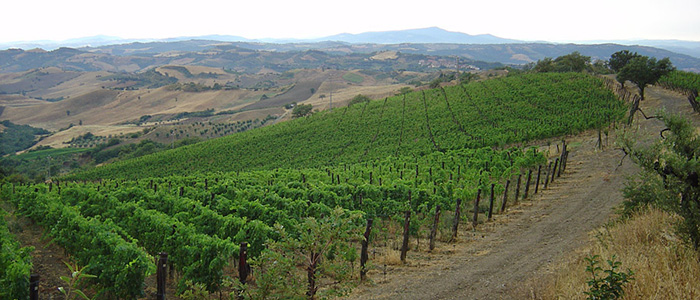 |
Montecucco vineyards at Podere Colle Castagno, the neighbour of Podere Santa Pia
|
| |
|
| |
|
Civettaio
|
| |
|
AZ. AGRICOLA
AGRITURISMO CIVETTAIO
Loc. Podere Civettaio, 58045 Civitella Paganico
Ref. Gregorio Dell'Adami de Tarcza
www.civettaio.it
|
| |
|
Colle Massari
|
 |
| Il castello di Colle Massari, Cinigiano [6]
|
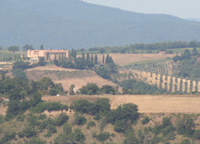
Castello Colle Massari, view from Podere Santa Pia

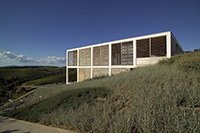
Azienda Colle Massari, cantina
|

|
ColleMassari, owned by sister and brother, Maria Iris Bertarelli and Claudio Tipa, was established in 1998 and is part of the Montecucco DOC in Alta Maremma, among the Docg Brunello di Montalcino DOCG and Morellino di Scansano DOC; conditions are ideal for growing sangiovese.
The ColleMassari Domaine comprises today three estates: from 1998 Castello di ColleMassari, Grattamacco since 2002 and the Poggio di Sotto Estate since 2011.
The main wines produced are ColleMassari and Rigoleto in the Montecucco DOC and Grattamacco and Bolgheri in the Bolgheri DOC.
Castello ColleMassari
Castello ColleMassari was founded in 1998 and is part of the Montecucco DOC area in Upper Maremma, a territory which is ideal for the growing of Sangiovese, and situated between the DOCG areas of Brunello di Montalcino and Morellino di Scansano. The first vintage produced was 2000.
The estate of Castello ColleMassari extends over some 1,200 hectares, with 110 hectares of vineyards, 60 of olive groves and 400 hectares of mixed crop.
The remaining area is woodlands and the whole farm is surrounded by a state forest covering some 1,200 hectares.
The agricultural estate is run according to the criteria of organic farming, guaranteed and certified by ICEA.
Maria Iris Bertarelli, mother of Ernesto and Dona, spent her early years in Tunisia, where she studied the arts. In 1964 she married Fabio Bertarelli, living together in Rome, then Switzerland and the United States.
She devoted a great deal of her time – and continues to do so – to causes and issues that are close to her heart. Between 1984 and 1999 she was President of ASBV (L’Association des Services Bénévoles Vaudois), while today she is a Board Member of the Bertarelli Foundation, which was founded in 1998 in memory of her husband. Together with her brother, Claudio Tipa, she also founded and runs the Fondazione Bertarelli, which works to promote and protect the cultural and social development of the Province of Grosseto and the region of Tuscany in Italy.[2]
Now a beloved grandmother of six, she lives in Gstaad, Switzerland, although she also spends time in Italy, where she and Claudio run the Colle Massari vineyard and estate, located in the foothills of Monte Amiata, in the south of Tuscany. Colle Massari was recently named as ‘Wine Producer of 2014′ by the prestigious Italian wine guide, Gambero Rosso wine guide.
AZ. AGR. COLLE MASSARI S.P.A. | Poggi del Sasso, 58044 Cinigiano
Tel. 0564 990496 Fax. 0564 990498 | e-mail info@collemassari.it | www.collemassari.it
Poggio di Sotto
Claudio Tipa, owner of ColleMassari and Grattamacco, bought Poggio di Sotto from Piero Palmucci in 2011. Poggio di Sotto is situated just outside the town of Castelnuovo dell'Abate in the southern part of Montalcino. Poggio di Sotto produces wines of rare elegance and subtlety for this part of the Brunello di Montalcino zone. The estate is run according to the criteria of organic farming, guaranteed and certified by ICEA.
|
| |
|
Podere Il Casino
|
| |
|
Early in 2000, the semi-derelict house and its 65 hectares of land were acquired at auction by Adolf and Alexandra Burkhardt. Since 2003, Anders Gautschi and Franziska Burkhardt have been directing the farm. The land is now cultivated according to the guidelines of organic farming and is officially certified organic since 2006. Today, 28 of the 65 hectares of land are cropland: 4 ha of vineyard, 6 ha of olive groves, and 18 ha of arable land.
The vineyards at an altitude of roughly 400 meters are just a stone’s throw away from the renowned vineyards of Montalcino and are part of the Montecucco – DOC area. Altogether roughly 4 hectares are planted with vines, divided into 4 plots with a density of 5500 plants per hectare. Sangiovese occupies the largest space and is our principal variety while certain particularly adapted spots are planted with Merlot and Cabernet Sauvignon.
Wines
Laïs Maremma Toscana Rosso and Montecucco Rosso
TOSCABERNE AZ. AGR. PODERE IL CASINO
Loc. Podere il Casino, 58038 Seggiano
Ref. Anders Gautschi e Franziska Burkhardt
www.podereilcasino.net
e-mail: info@podereilcasino.net
|
| |
|
Le Calle
|
| |
|
Azienda Agricola Agituristica Le Calle is located in the Poggi del Sasso hills, in the heart of DOC Montecucco region. It is a small, family-run company that covers an area of 70 hectares, 6 of which are covered by vineyards, with exposure to the south-west at 350 metres above sea level, and 6 hectares by olive groves.
The names of the vines ares Poggio d’Oro, Campo Rombolo, Campo Beo and La Serrata.
Once the grapes have reached optimum ripeness, they are harvested by hand, carefully selected and placed in boxes to be carried to the cellar where they are turned into white or red wine.
AZ. AGR. BIOLOGICA LE CALLE
AGRITURISMO LE CALLE
Loc. La Cava , 58040 Poggi del Sasso
www.lecalle.it
e-mail info@lecalle.it
|
| |
|
Orciaverde
|
| |
|
Since 1998, with the institution of DOC Montecucco, the farm has been turning more and more its interest to cultivate vine, mainly planting sangiovese clones, a very hard to manage autochthonous species of vine, but which gives excellent results in this environment.
Currently the producing plants cover a surface of about 4 hectareshe farm, which extends for over 40 hectares, cultivates also forages and cereals, in particular durum wheat, applying complete respect for the environment. A warrant of this is the fact that we have been among the first to believe in the validity of "agriquality brand" project and "integrated method", the so-called "white butterfly", which recalls a clean and pure nature.
Wines: Montecucco Rosso, Montecucco Sangiovese DOC and Montecucco Sangiovese Riserva DOC.
Finally in 2007, Orciaverde becomes a certified organic farm by ICEA.
AZ. AGR. BIOLOGICA ORCIAVERDE
Loc. Montenero d'Orcia, Pod. 369, 58033 Castel del Piano
Ref. Simone Governi, Emanuela Mezzani
www.orciaverde.it
e-mail: info@orciaverde.it
|
| |
|
La Poderina Toscana
|
| |
|
AZ. AGR. BIOLOGICA LA PODERINA TOSCANA
Loc. Poderina, 58030 Montegiovi
Ref. Davide Borsell
Tel/ Fax. 0564 956546 Cell. 328 370930
e-mail info@lapoderinatoscana.com
www.lapoderinatoscana.com
|
| |
|
Poggio al Gello
|
| |
|
AZ. AGR. PODERE POGGIO AL GELLO
PRODUZIONE BIOLOGICA CERTIFICATA
Pod. Poggio al Gello, Loc. Il Gello 66, 58048 Paganico
Ref. Alda Chiarini
www.poggioalgello.it
|
| |
|
Poggio al Ninfale
|
| |
|
|
| |
|
Salustri
|
| |
|
Z. AGR. SALUSTRI
AGRITURISMO IL MANDORLO
Loc. La Cava 7, 58040 Poggi del Sasso
Ref. Marco Salustri
www.salustri.it
e-mail info@salustri.it
|
| |
|
Tenuta di Paganico |
| |
|
Since 2002, the entire Estate has been converted to the methods of organic farming and breeding, interpreting these methods not with an improvised approach but following a particular strategy where organic farming is carried out as a systematic revision of the techniques, traditions and tools used for centuries in Maremma, based on innovative and up-to-date skills, knowledge and technologies.
The vineyards are strictly organic (certified ICEA); only copper and sulphur are used, and only when necessary. Podere I Bandi 2006 wine is made with the fruit of Sangiovese, Merlot and Colorino Toscano vines in the third year of production.
Farm shop
Farm shop & Product Tasting, where visitors may taste, and purchase the Estate’s products.
Since March 2009, TDP has housed a new exciting facility, named “the Opificio”. This word, derived from the Latin “opificium”=workplace, generally identifies a factory where raw materials are processed and transformed into the finished product.
SOCIETA' AGRICOLA S.P.A Tenuta di Paganico
Via Della Stazione 10, 58045 Civitella Paganico
www.tenutadipaganico.it
|
| |
|
Villa Patrizia
|
| |
|
Villa Patrizia was founded in the late 60's by the intuition of Romeo Bruni. The company decides to invest in the DOC (DOCG by 2007) Morellino di Scansano buying 4 hectars of vineyard in the locality Piandorneta, just 7 km from the farm. The 2000s are those of the global downturn after 9 /11, but others vineyard are implanted in Villa Patrizia and some of the oldest one are renovated. In recent years the company collaborates with the prestigious enologist Fabrizio Ciufoli and in 2007 convert vineyards and olives to organic agricolture.
Villa Patrizia covers a total of 25 hectares; 70% of vineyards (10 hectars) are located in the municipality of Roccalbegna around the farm center. Villa Patrizia only works with its own grapes and produces about 65,000 bottles
divided between Morellino, IGT Toscana (Bianco, Rosato, Rosso) and Montecucco.
AZIENDA AGRICOLA BIOLOGICA VILLA PATRIZIA
Loc. Villa Patrizia, frazione Cana, Roccalbegna (GR)
REF. Patrizia Bruni
nfo@villa-patrizia.com
www.villa-patrizia.com
|
| |
|
 |
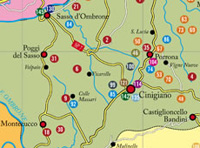
|
|
|
| |
|
Organic Wine growing in Montalcino Tuscany
|
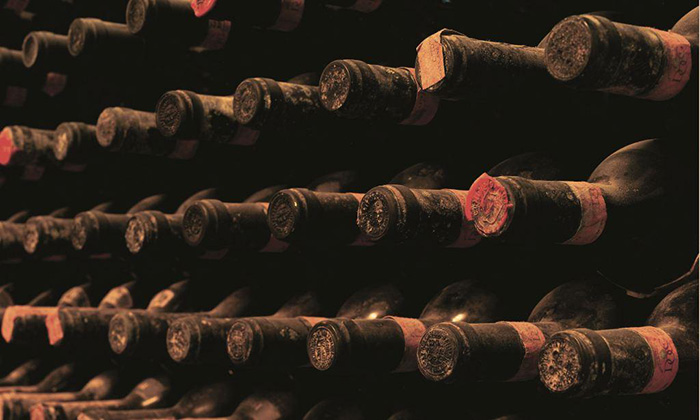
|
| |
|
Old Brunello wines. Source: Brunello Consortium
|
| |
|
The terroir of Brunello di Montalcino is a complex mosaic of vineyards resting on the various sides of the hill, each with its own unique characteristics. The commune Montalcino is made up of four urban centers: Montalcino, San Angelo in Colle, Castelnuovo dell’Abate and Torrenieri.
The wine production area of Montalcino is delimited by the valleys of the Orcia, Asso and Ombrone rivers. Its shape is almost circular with a diameter of 16 Km and a surface of 24,000 hectares.
Although only 16km in diameter ,the altitude and soil composition vary throughout its sub-regions. On the mountainside, southeast, characterized by sandstone and marl with volcanic tufa, we find several small biodynamic producers.
The pioneer for organic viticulture of Sangiovese grapes used in the production of the noble Brunello di Montalcino is Francesco Leanza from Podere Salicutti.
Francesco Leanza makes his Brunellos with organic farming methods, wild yeasts, and as little intervention as possible in the cellar. The Salicutti farm is located in the eastern slope of the Montalcino hill.
Other producers on this side of the hill who produce wine from organically grown grapes are Azienda San Polino, Pian dell'Orino and Podere San Giuseppe.
On the western slope of the hill, in the direction of Sant'Angelo in Colle, there are Azienda Corte Pavone, Cupano, Castello di Argiano and Campi di Fonterenza.
|
| |
|
Salicutti
|
'If you appreciate the subtle elegance and complexity of great Burgundy, this is your Brunello: luminous and garnet-colored with earthy flavors and a silky palate. Proprietor Francesco Leanza makes his graceful Brunellos with organic farming methods, wild yeasts, and as little intervention as possible in the cellar...[he] ended up choosing an ideal location that has allowed him such great fruit that it need only be guided rather than forced [in the cellar]... These are some of the best Brunellos...'
Kerin O'Keefe [4]. |
|
Francesco Leanza is one of the leading figures in the tiny, yet burgeoning “Natural Wine” movement in Brunello appellation.
The name Podere Salicutti comes from a stream on the southern boundary of the property. It is run meticulously by Francesco Leanza who left his career as a chemical engineer in Rome to dedicate himself full-time to Podere Salicutti in 1995. Salicutti estate covers 11 hectares of land comprising vineyards (around 4 hectares), olive groves (around 1.5 hectares and woods (3.30 hectares). The land is farmed with organic methods following very simple techniques, which increase the fertility of the soil with the organic nutrients from stable manure and green-manuring with leguminous crops and cereals.
Wines
Salicutti Brunello di Montalcino Piaggione, Salicutti Brunello di Montalcino Tre Vigne, Salicutti Rosso di Montalcino, Dopoteatro Rosso Tuscan IGT.
Directions
Podere Salicutti is situated in the South-East of the Montalcino territory, above the route SP 55 to Castelnuovo dell’Abate- Abbey of Sant’Antimo, at approximately 4 km before the village.
Podere Salicutti | AZIENDE AGRICOLA di FRANCESCO R. LEANZA
Podere Salicutti 174
53024 Montalcino (Siena)
Email: leanza@poderesalicutti.it
www.poderesalicutti.it |
| |
|
San Polino
|
Youtube: I am wine - San Polino |
|
Azienda San Polino, owned by Luigi e Katia Fabro who grow 2.5 hectares (about 6.1 acres) of AIAB (Associazione Italiana per l'Agricoltura Biologica, or Italian Association for Organic Agriculture) certified grapes. San Polino produces a certified organic Brunello, Rosso di Montalcino and extra-virgin olive oil.
They have 3 hectares of vineyard and 1.5 hectares of olives which are surrounded by the wilderness of mediterranean woods and shrubland.
In the interests of autochthony and typicality they farm only the Sangiovese vine varietal and use, for the most part, only manual work in the fields. They pay great attention to the health of the soil, believing that true DOCG can only come from soil that is thriving with a complex interaction of micro-life. The family-run small farm uses permaculture and biodynamic-organic farming to produce a premium Brunello di Montalcino and Rosso di Montalcino.
Their first Brunello was released in 2001.
Luigi Fabbro was born in Friuli and grew up on a farm. His partner for the last 25 years, Katia Nussbaum, was born in London. She studied and took her degree in Social Anthropology before coming to live in Montalcino in 1985. Alberto Gjilaska was born in Albania and studied agriculture and enology in Tirana.
Winemaking at San Polino follows the norms of the AIAB /IFOAM for organic winemaking.
AZIENDA AGRICOLA SAN POLINO
Podere San Polino, 163
53024 Montalcino Siena
www.sanpolino.it
vino@sanpolino.it
Directions
From Montalcino take the road in the direction of Castelnuovo dell' Abate. After approx. 4 km you will find a turn-off on the left with many signs, including ours, the most visible indicating the Ristorante Barbi. Take this road and at 2km, on your right, you will see the big wooden sign of San Polino.
|
| |
|
Pian dell-Orino
|
| |
|
Right next door to the famous Biondi Santi estate, Pian dell-Orino is a small estate owned by Caroline Pobitzer and Jan Hendrik Erbach, a couple who cares about biodynamic winemaking and agriculture.
Caroline Pobitzer came to Montalcino from South Tyrol in Northern Italy. She was born there and lived and managed the family property, a large renaissance castle called Castel Katzenzungen.
Jan Hendrik Erbach was born in Karlsruhe and brought up in Germany. He studied viticulture at the prestigious Geisenheim Academy.
Caroline Pobitzer and Jan Hendrik Erbach met in Montalcino where Caroline, from Alto Adige, had set up the firm and Jan Hendrik, from Germany, agronomist and enologist, worked as a consultant for her winery.
Az. Ag. Pian dell'Orino
Loc.Piandellorino,189
53024 Montalcino (SI)
info@piandellorino.it
www.piandellorino.com
|
| |
|
spa – Sangiovese per amico
|
| |
|
Francesco Rosario Leanza, Stalla di Campalto, Caroline Polbitzer and Jan Erbach share the sensibility to the environment protection issue that made themadopt organic and biodynamic farming methods. They joined together and seceeded from the Consorzio di Brunello, creating spa – Sangiovese per amico, in direct response to the corruption of the “Brunellogate” scandal. The vineyards are located south-east of Montalcino, along the road leading to Castelnuovo dell’Abate. In the nineties, they started harvesting, making and ageing wine from Sangiovese of Montalcino in the wine firms, Podere Salicutti, Pian dell’Orino and Stella di Campalto.[5]
|
| |
|
spa – Sangiovese per amico | www.sangioveseperamico.com
|
| |
|
San Giuseppe
|
| |
|
The San Giuseppe Winery takes its name from the sharecropping estate established by Giuseppe Martelli in 1910. Abandoned in 1940, the estate was then acquired by the di Campalto family in 1992.
The estate extends across 13.45 hectares on what is an integral piece of land around the cellar complex - an area that is home to woodlands, olives groves (planted in 1920) and 5.5 hectares of vineyards. Great attention is paid to harvesting the parcels of vines separately in order to capture the maximum fruit quality and soil expression, using gravity and a combination of large 38hl Austrian oak barrels and French oak barriques to vinify the juice as gently as possible.
The company has been certified organic since 1996. Biodynamic methods have been used since 2002. Stella Di Campalto is the first “biodynamic” winegrower in Montalcino.[5].
Wines
Brunello di Montalcino D.O.C. G. and Rosso di Montalcino D.O.C.
AZIENDA AGRICOLA SAN GIUSEPPE DI STELLA DI CAMPALTO
Castelnuovo dell'Abate Montalcino Siena
Podere San Giuseppe
S.P. 55 Della Badia di Sant’Antimo, Km 10,2
53024, Montalcino (Siena) Casella postale, 6
info@stelladicampalto.com
www.stelladicampalto.it
|
| |
|
La Fornace
|
| |
|
La Fornace is a small family-owned company. From peasant roots (mezzadrie in Italian meaning sharecroppers) the family has been on the land in Montalcino for many generations. It was only in 1964 that they were able to purchase the land and realise their dream of creating wine under their own label of La Fornace.
The estate is seven hectares on the north east side of Montalcino. It has 4,500 vines per hectare.
Wines: Brunello di Montalcino, Rosso di Montalcino DOC and, in the best vintages of Brunello Riserva DOCG.
Az. Agr. LA FORNACE di Fabio Giannetti
Podere Fornace 154/A 53024 Montalcino
|
| |
|
Collemattoni
|
| |
|
The Collemattoni vineyards and winery is located on the south side of Montalcino.The winery is run now by Marcello Bucci, who pours the Tuscan ancestral knowledge straight into his organic wines.
The Bucci family has been living at Collemattoni for generations. Collemattoni was created by Aldo Bucci, Marcello’s father, in 1982.
The small estate produces three wines: Brunello di Montalcino and Rosso di Montalcino, along with the new Rosso Adone. This small estate farms approximately seven hectares of vineyards in Sant’Angelo in Scalo and Castelnuovo dell’Abate.
AZIENDA AGRICOLA COLLEMATTONI
Loc Collemattoni
53024 Montalcino Siena
www.collemattoni.it
|
| |
|
Casa Raia
|
| |
|
Casa Raia is a small organic winery in walking distance from Montalcino town center.
The estate once belonged to the patriarchal family of Brunello di Montalcino, the Biond Santi. In 1997 the then abandoned farm house wasrestored and named Casa Raia after the matriarch of the new family, Raissa Temertey. Pierre Jean Monnoyer and his wife Kalyna have restored the vineyards.
Wines:
Rosso di Montalcino DOC, Brunello di Montalcino DOCG and Bevilo Toscana IGT.
Pod.Scarnacuoia 284, Montalcino 53024, SI Italy
casaraia@ymail.com
www.casaraia.com
|
| |
|
Cerbaiona
|
| |
|
Diego Molinari was an Alitalia pilot for 25 years before retiring in the late 1970s to pursue his winemaking dreams in the bucolic Cerbaiona estate.
The first Brunello was pruduced in 1981 and since then the wines of Diego Molinari are among the most loved and appreciated of Montalcino
The tiny 3-ha vineyard is located on a ridge just east of Montalcino. While much is written about the difference between northern and southern Montalcino wines, Cerbaiona lies in an intermediate zone.The grapes are harvested by hand and pressed in a vintage wood-sided press before fermenting in cement tanks. After a period of settling, the Brunello spends 4+ years in cask and at least 6 months in bottle before release. Nothing is added (no yeasts, no enzymes) and nothing is subtracted (no fining or filtration).
AZIENDE AGRICOLA CERBAIONA di Diego Molinari
53024 Montalcino - SI
cerbaiona@alice.it
|
| |
|
Sesti Castello di Argiano
|
| |
|
The Sesti estate consists of 102 hectares (254 acres) of land, of which nine hectares are planted to vineyards.
Castello di Argiano’s estate is owned by astronomer Giuseppe Sesti and run according to organic and biodynamic philosophy. [0] Giuseppe Sesti is an academic with a particular passion for the effects of the moon on agriculture. For thirty years he organised the festival of Baroque opera at Batignano in Tuscany at the same time as restoring the medieval hamlet of Castello di Argiano including the cellars and the planting of olive groves and the vineyards.
Wines
Castello di Argiano Sesti Phenomena Brunello di Montalcino DOCG (Phenomena is the name given to commemorate a significant astronomical event which occurred during the harvest on the 6th of September 2005), Castello di Argiano Sesti Brunello di Montalcino DOCG, Brunello di Montalcino Riserva DOCG, Castello di Argiano Sesti Rosso di Montalcino, Castello di Argiano Sesti Monteleccio Tuscany IGT,
Castello di Argiano 'Castello Sesti' Terra di Siena, Castello di Argiano Sesti Rosato Toscana IGT, Castello di Argiano Sesti Grangiovese Toscana IGT, Castello di Argiano Sesti Sauvignon Toscana IGT.
Azienda Agricola Sesti
Loc. Castello di Argiano
53024 Montalcino
www.sestiwine.com
|
| |
|
Villa di Argiano
|
| |
|
At the summit of a wonderful hill, south-west of Montalcino, the magnificent Villa of Argiano was built between 1581 and 1596 by the Peccis, a noble family from Siena. Remaining for some decades under the Pecci family, ownership of the estate changed hands over the centuries among various noble families (the counts of Pieri, who bequeath it to the marquis of Ballanti Merli ) until the 19th century, when it came into the possession, and under the enlightened management, of Lady Ersilia Caetani Lovatelli. In 1992, it was acquired by the countess Noemi Marone Cinzano. She began working with the internationally acclaimed oenologist Giacomo Tachis, a partnership which led to the birth of the Supertscan Solengo.
At the beginning of 2013, the estate was sold toto a group of Brazilian businessmen.
The great Italian poet Giosuè Carducci wrote a verse at the time saying “nella quale asprezza mi tersi col vin d’Argiano, il quale è molto buono…” (in the harshness of which I cleansed myself with Argiano wine, which really is good…).
Wines:
Brunello di Montalcino D.O.C.G., Rosso di Montalcino D.O.C., NC I.G.T., Solengo I.G.T. (which is Tuscan for “lone wild boar”), Suolo I.G.T. 0.75 ml and Bulk wine.
The wine shop | Opening hours:
Monday to Friday from 9.00 a.m. until 6.00 p.m.
Saturday (only with reservation) from 10.00 a.m. until 6.00 p.m.
For information:
E-mail – argiano@argiano.net
Argiano S.p.A. Società Agricola
S. Angelo in Colle
53024 Montalcino (SI)
email: argiano@argiano.net
www.argiano.net
|
| |
|
Col D'Orcia
|
| |
|
Col D'Orcia, neighbor of Banfi Castle and another of Montalcino's biggest estates. Col d'Orcia is the largest azienda vinicola biologica in Tuscany.
Francesco Marone Cinzano, belonging to the family Cinzano producing vermouth, runs the farm since 1991 but the property is owned by the family since 1973.
Col d’Orcia literally means the hill overlooking the Orcia River. The Orcia River marks the South West border of the Brunello di Montalcino territory and the name of the farm is intrinsically linked to the physical location were the vineyards are planted. It is the mission of Col d’Orcia to produce the best possible wines that the exceptional combination of soil and climate of this part of Montalcino can achieve.
Since August 27, 2010 the whole estate Col d'Orcia, including vineyards, olive groves, other fields and even the gardens are farmed following exclusively organic agricultural practices.
Wines
Poggio al Vento, Brunello di Montalcino Riserva DOCG, Banditella Rosso di Montalcino DOC, Brunello di Montalcino DOCG Col d'Orcia, Nearco Sant'Antimo Rosso DOC, Olmaia Sant'Antimo Cabernet DOC, Gineprone Chianti DOCG, Spezieri Toscana IGT, Pinot Grigio Sant'Antimo DOC, Pinot Grigio Toscana IGT, Ghiaie Bianche Sant'Antimo Chardonnay DOC, Grappa di Moscadello Pascena and Pascena Moscadello di Montalcino.
COL D'ORCIA S.r.l. Società Agricola
Via Giuncheti
53024 Montalcino
www.coldorcia.com
|
| |
|
Organic Winemaking in the Val d'Orcia
|
| |
|
Until fairly recently the Val d'Orcia was a different sort of wine country, with wines made primarily for local consumption, and quantity being sought much more than quality. This changed 2000, when the Orcia DOC Appellation was established. |
| |
|
|
| |
|
|
| |
|
Val D'Orcia Terre Senesi Srl
|
| |
|
The Val D'Orcia Terre Senesi estate began its activity in organic farming in the mid-nineties with the purchase of a few acres of Olivastra Seggianese Amiata in the municipalities of Seggiano and Castel del Piano. With the acquisition of the farm Scarabotti, on the crest of Ripa d'Orcia, in the heart of the Val d'Orcia Park, continues the engagement with organic winegrowing in the d'Orcia Rosso DOC region.
Wines:
Ripario - Orcia Rosso D.O.C., Bucaccio - Orcia Rosso D.O.C., Scarabotti - I.G.T., Riparosa Orcia Rosè D.O.C., Calicepieno - Orcia Bianco D.O.C. and Nagocciola - Vin Santo D.O.C..
Val D'Orcia Terre Senesi Srl
Case Sparse 3, Loc. Ripa d'Orcia - 53023
Castiglione d'Orcia SI
info@valdorciaterresenesi.com
www.valdorciaterresenesi.com
|
| |
|
Capitoni
|
| |
|
The farm, Podere Sedime was recorded in the Sienese area land register in 1692 as the property of the Gherardi family (source: Archivio di Stato di Siena). Capitoni Marco Azienda Agraria was established by the Capitoni family that has always worked and lived in the land. The symbol of Capitoni is the caryatid (a female figure with an austere and stiff demeanour, a clearly recognisable symbol of prosperity and fertility) from the ancient 8th century Pieve di Corsignano. For centuries the bells of the Pieve have marked time for the country workers, the mezzadrie, or sharecroppers who lived on this land.
AZ. AGR. SEDIME DI CAPITONI MARCO - 63, Localita' Pod. Sedime - Pienza
Capitoni Marco Azienda Agraria
Podere Sedime 63,
53026 - Pienza (SI)
email: info@capitoni.eu
www.capitoni.eu
|
| |
|
Podere Forte
|
| |
|
Nestled between the Orcia and Montalcino Rivers at the foothills of Monte Amiata, Podere Forte is located just outside of Castiglione d’Orcia, an historic hilltop village of Etruscan origin, located about 20 km south of Montalcino.
The historic domain that once belonged to the Aldobrandeschi, the Salimbeni and the Petrucci families,was re-baptized Podere Forte in 1997, following the ancient Tuscan custom. It is on this land that was practically left to abandon, that Pasquale Forte decided to recreate the genuine and authentic environment of a traditional farm producing organic wine, oil, flour, honey, spices and salumi.
Wines: Orcia DOC Guardiavigna, Orcia DOC Petrucci, Orcia DOC Petruccino andOreno Toscana Rosso.
www.capitoni.eu
Podere Forte
Loc.Petrucci 13 53023
Castiglione d?'Orcia
Siena
www.podereforte.it
|
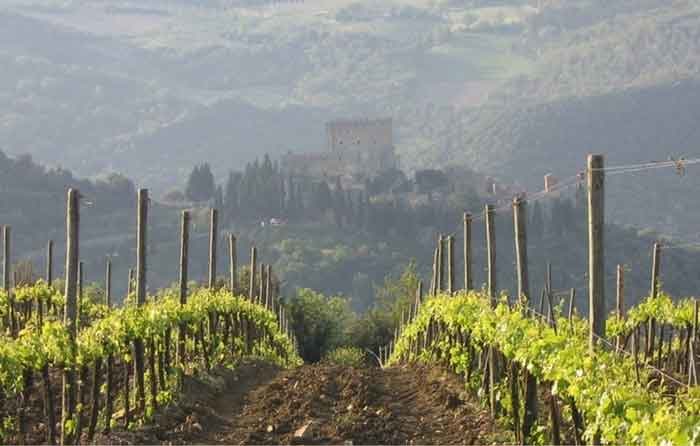 |
|
|
|
|
|

|
San Quirico d'Orcia |
|
Villa La Foce |
|
|
| |
|
|
|
|

Wines in Tuscany | Strada del Vino Orcia
I migliori vini della Toscana | Montecucco | Consorzio Tutela Vini
Roses | Planting Rose Bushes With Grape Vines
DOCG Brunello di Montalcino | Member companies of the DOCG Brunello di Montalcino
Consorzio del Brunello di Montalcino | Consorzio del Vino Brunello di Montalcino | Costa del Municipio, 1, 53024 Montalcino (Siena)
Bottler members Map 2014
|
| |
| |
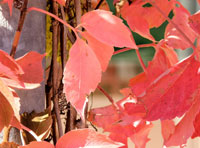 |
|
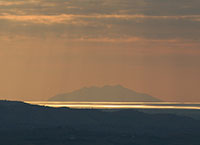 |
|
|
Wines in Southern Tuscany |
|
Sunset, with a view on Montecristo |
|
|

|
|
|
|
|
[0] Natural wine is wine (made from organic grapes) with minimal chemical and technological intervention in growing grapes and making them into wine. The term is used to distinguish such wine from organic wine. Organic wine is organic in the sense of having been produced made from organically grown grapes, but may be subject to chemical and physical manipulation in the winemaking process.
For a wine to be labelled ‘biodynamic’, the already organic vineyard must have been subjected to the very specific nine biodynamic preparations advocated by the Austrian philosopher Rudolf Steiner in the 1920s. This thinking has a more spiritual bent, influenced by a belief in the impact of lunar movements and the natural rhythms of nature. Whether a producer decides to follow an organic or biodynamic route, these methods can both be described as ‘natural’.
[1] Growing organically is a type of agriculture that considers the entire ecosystem of agriculture, growing organically exploits the natural fertility of the soil by favoring with limited interventions, using regulatory mechanisms promoting natural biodiversity of the environment in which it operates.
Source: The biological wine in Tuscany | www.firenzemadeintuscany.com
[2] The Bertarelli Foundation was established in 1998 in memory of Fabio Bertarelli and today is active in those fields that have a historic and current significance to the family.
The family’s philanthropic work was initially expressed through the Serono Foundation, which was founded in the 1970s to encourage global excellence in medical education.
Website | www.bertarelli.com
[4] Kerin O'Keefe, Brunello di Montalcino: Understanding and Appreciating One of Italy's Greatest Wines, University of California Press.
[5] It is also important to mention the collaboration that she and two other vintners started: the SPA, Sangiovese per Amico. In direct response to the corruption of the “Brunellogate” scandal, which revealed massive amounts of fraudulent Brunello being made by the addition of non-Sangiovese based grapes, Stella and two colleagues at Poderi Salicutti and Pian dell’Orino joined together and seceeded from the Consorzio di Brunello, the dominant political entity that oversees all legislation regarding Brunello. In their quest to better define and celebrate what makes the several subzones of Montalcino different, as well as the genetic variety of Sangiovese that exists there, they proposed to meticulously measure and quantify these differences, attempting to create a map of the terroirs of Montalcino, a la Burgundy or any region that has a classification system of Crus. They were met with hostility and threats from the largest abusers of the name “Brunello di Montalcino”, as such a classification would reveal who is the real deal, and who is a pretender…….
The biggest contributor to this meticulous study is Jan Hendrik Erbach of Pian dell’Orino.
[Source: www.downtoearthwines.net]
[6] Photo by aurelio candido, published under a Attribution-NonCommercial-NoDerivs 2.0 Generic (CC BY-NC-ND 2.0) license.

|
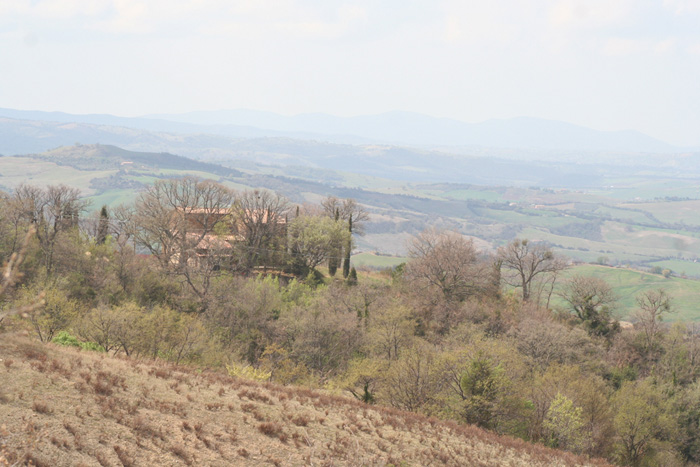 |
Podere Santa Pia overlooking the Maremma hills
|
|
|








